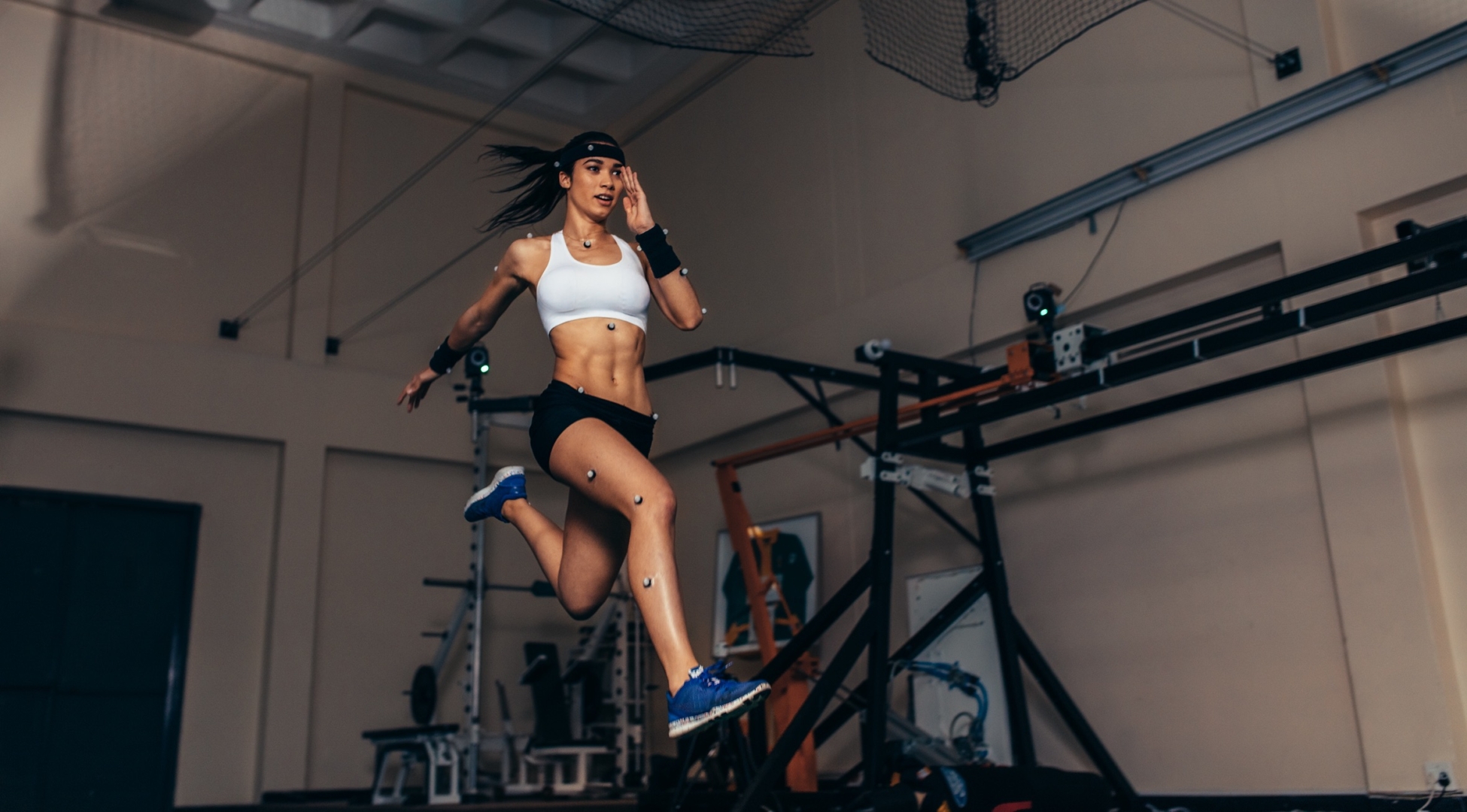Force plates: What are they and what insights do they provide?
Force plates are used to analyse the ground reaction force of athletes during walks, runs, or other physical exercises like jumping. But how do coaches and athletes get the most out of them?
What are force plates?
A force plate is an instrument that allows athletes and coaches to detect and measure forces exerted onto the ground during movement or exercise. They generally look like a simple square or rectangle pedestal that sits flat on top of gym floors, but can also be embedded into the ground to sit flush.
“The force one exerts into the ground is known as a ground reaction force, and the plates follow Newton’s third law (whenever two objects interact, they exert equal and opposite forces on each other). Regarding force plates, when a person is standing, the ground reaction force corresponds with the person’s body weight,” said leading sports scientist Adam Wylie during his Science for Sport presentation titled ‘Getting the Most Out of Force Plates’.
Force plates are used to analyse the ground reaction force of athletes during walks, runs, or other physical exercises like jumping.
“The plates detect and measure accelerations, reactions and athlete imbalances to provide training insights for coaches and to support rehabilitation processes,” said Wyile.
What do force plates measure?
“With force plates, you can complete a number of tests and therefore measure body symmetry, rehabilitation effectiveness, running/walking gait, balance, and changes of pressure,” explains Wylie.
Collectively, this testing and data can be used to study the posture, power, and positions of athletes as they move, for diagnostic and rehabilitation purposes. This information can be combined with other data, such as limb mechanics, to establish an athlete’s movement efficiency.
“Force plates, therefore, provide a range of athlete-specific information and a quantitative assessment of your athletes, creating a picture of how your athletes move, cope with stresses, and respond to training and competition,” Wylie said.
Creating this athlete picture enables coaches to reduce injury risks and optimise performance.
Testing options
Strength and jump testing are the two most common uses of force plates.
Examples of strength tests include different bilateral strength testing options: isometric mid-thigh pull and isometric squat hold. In addition, unilateral strength testing options can be completed: single leg isometric mid-thigh pull and single-leg squat hold.
“Force plates enable you to test key strength metrics, such as an athlete’s peak force output, rate of force development, and limb asymmetry which are essential to determine when assessing strength,” mentioned Wylie.
The second most common testing options with force plates are jump-movement based.
Examples of jump tests include bilateral strength testing options: countermovement jump, squat jump, and drop jumps. Furthermore, unilateral strength testing options can include: single-leg countermovement jump, single-leg drop jump, and hop and return.
“With these tests, coaches can improve their understanding of jump height, peak force, and reactive strength index. Collectively these tests empower coaches’ decision-making, improve athlete performance, and help athletes prepare for the stresses of their competitive environments,” he said.
Training interventions with force plates
Wylie suggests coaches should consider two key measurements when looking to make their first training interventions with force plates.
- Dynamic Strength Index (DSI) – the difference between an athlete’s maximal and explosive strength capacity.
- Eccentric Utilisation Ratio (EUR) – an indicator of lower-extremity stretch-shortening cycle performance in athletes.
“Jump height and concentric force are used to calculate DSI and force plate tests, countermovement jump and isometric mid-thigh pull, help to facilitate this assessment. EUR is an indicator of lower limb power output and key force plate metrics such as jump height provide coaches with this important indication,” explained Wylie.
If your athlete has a low DSI range, Wylie suggested: “coaches should focus their attention on plyometric and rate of force development training interventions – for instance, tall to short landing drills, hurdle jumps, and loaded to unloaded jumps. This way coaches can help their athletes overcome deficiencies in their maximal and explosive strength.”
In addition, “an athlete with low EUR should focus their training development on stretch-shortening cycle activations which include plyometrics, progressing to higher amplitude with hurdle jumps, hurdle hops, and depth jumps,” said Wylie.
Adam Wylie is a sports scientist currently working at Athletes Authority. His passion for performance comes through the use and implementation of data and analysis to help drive positive changes in an athlete’s sport or rehabilitation.



